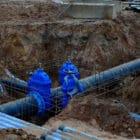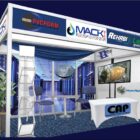The continuous functioning and safety of water, gas and oil pipelines are crucial for both residential and industrial purposes. Over time, these pipelines deteriorate due to factors such as corrosion, ground movement, and internal wear and tear. Relining and rehabilitation provide efficient solutions to extend the life of existing pipelines without the need for full-scale replacements. This blog post delves into the best practices and important factors in renewing water, gas, and oil pipelines to ensure their reliability and efficiency.
Assessing the Condition of Existing Pipelines
Before considering relining and rehabilitation, it is vital to assess the current condition of the pipelines. Inspections should be thorough and utilize advanced technologies such as CCTV (Closed-Circuit Television) and ultrasonic testing. These technologies offer detailed images and internal views of the pipes, highlighting areas that need attention.
Another important aspect of the assessment phase is determining the type of damage. Corrosion, cracks, and joint failures each require specific techniques for rehabilitation. Consequently, a comprehensive assessment helps in tailoring the renovation approach, ensuring that the most appropriate and cost-effective methods are used.
Selecting the Right Relining Materials
The choice of relining materials is a critical factor that can significantly impact the longevity and effectiveness of the rehabilitated pipeline. There are several options available, including cured-in-place pipe (CIPP), slip-lining, and spray-on lining systems. Each material has its own set of characteristics, advantages, and limitations.
CIPP, for instance, is a popular choice due to its adaptability and strength. However, slip-lining is often preferred for pipelines with minimal bends and diameter changes. On the other hand, spray-on lining systems are suitable for quick repairs and provide a smooth, corrosion-resistant surface. Therefore, a detailed understanding of the materials can guide the selection process, ultimately ensuring a successful rehabilitation project.
Environmental and Regulatory Compliance
Ensuring environmental and regulatory compliance is another cornerstone of effective pipeline relining and rehabilitation. Various jurisdictions have codes and standards that must be adhered to during the renovation process. These regulations are designed to protect both the environment and public safety.
Furthermore, some relining materials and processes can potentially release harmful substances. Thus, choosing eco-friendly materials and methods is not only a regulatory requirement but also a best practice. By being vigilant about compliance, projects can avoid legal complications and promote sustainable practices.
Preparing the Pipeline for Rehabilitation
Preparation is a key step that should not be overlooked. Effective cleaning of the pipeline interior is essential to ensure the adhesion and effectiveness of the new lining. Techniques such as high-pressure water jetting and mechanical cleaning are popular methods to remove debris, scale, and other obstructions.
Additionally, minor repairs might be necessary before the relining process. Fixing minor cracks and leaks can prevent future failures and ensure that the new lining performs optimally. As a result, proper preparation can significantly enhance the durability of the rehabilitated pipeline.
Execution of the Relining Process
The execution phase involves the actual installation of the chosen lining material. This step requires precision and expertise. For instance, CIPP involves inserting a resin-saturated liner into the pipeline and curing it in place using heat or UV light.
Execution also includes monitoring and quality control. Frequent checks and tests should be conducted to ensure the lining is properly installed and cured. Therefore, a well-executed relining process minimizes disruptions and maximizes the lifespan of the pipeline.
Post-Rehabilitation Inspection and Testing
After the relining process is complete, thorough inspections and tests are imperative. This step ensures that the rehabilitation work meets the required standards and that the pipeline is safe for use. Techniques such as pressure testing and CCTV inspections are commonly used in this phase.
Moreover, inspecting the pipeline post-rehabilitation helps identify any issues that might have been overlooked during the initial process. Promptly addressing these issues can prevent future complications, thereby ensuring the long-term success of the rehabilitation project.
Maintenance and Monitoring
Finally, ongoing maintenance and monitoring are essential for sustaining the benefits of pipeline rehabilitation. Regular inspections and maintenance schedules should be established to detect any early signs of wear and tear.
Furthermore, implementing advanced monitoring technologies like SCADA (Supervisory Control and Data Acquisition) systems can provide real-time data on pipeline performance. This proactive approach allows for timely interventions, minimizing the risk of major failures and extending the lifespan of the pipeline.
All in All
Relining and rehabilitating pipelines are indispensable practices for maintaining the integrity and reliability of water, gas, and oil conveyance systems. By following best practices and important factors in renewing pipelines, including thorough assessments, material selection, environmental compliance, meticulous preparation, precise execution, post-rehabilitation inspection, and ongoing maintenance, stakeholders can ensure the long-term success of their projects.





